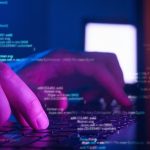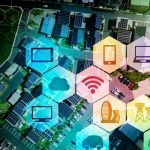High demand at Tesla Supercharger stations has led to new measures aimed at keeping charging orderly for drivers. As electric vehicles gain popularity, especially Teslas, ensuring fair access to charging infrastructure has become more complex. Drivers have occasionally reported rare incidents where line-cutting disrupts the sequence of charging, leading to frustration. Recognizing the need to address these issues, Tesla now trials a solution intended to foster smoother experiences at its charging locations. The initiative also reflects attempts to balance convenience with equity as more brands tap into Tesla’s Supercharger Network alongside its own users.
Other regions previously coped with similar Supercharger congestion by expanding physical infrastructure or deploying staff at peak periods, but these approaches addressed only part of the root problem. While line-cutting was referred to in online forums and community discussions in recent years, most earlier measures centered on station expansion rather than queue management. The current move to a virtual queuing system marks a departure from simply building more stalls. By integrating digital interaction directly with the car and driver, it seeks to prevent confrontations proactively rather than responding after incidents occur.
What Prompted Tesla to Test Virtual Queuing?
With the Supercharger network accommodating not only Tesla vehicles but also other brands, congestion at charging sites has increased. Reports of drivers bypassing others in line—though infrequent—have persisted. These instances, even if rare, can escalate tensions among EV owners, as efficient charging access is essential. Recognizing this, Tesla determined that a software-based solution could assist, ensuring that waiting order is transparent and clear to all users at the station.
How Does the Virtual Queue Work?
The system notifies drivers of their position in the queue via their vehicle interfaces, limiting the potential for misunderstandings or intentional breaches of order. Tesla began internal trials of this technology at selected Supercharger sites, focusing on testing various scenarios and user behaviors. According to Max de Zegher, Tesla’s North American charging head, “Public pilots next. If we get this right, it will be a big improvement for those rare cases with a wait.”
What Are the Next Steps for Rollout?
Once internal testing concludes, Tesla plans to launch public pilots at specific Supercharger locations. The company is evaluating performance in diverse situations, including responses to drivers attempting to circumvent procedures. Lessons learned during the private phase are expected to inform refinements before wider availability, and drivers have been encouraged to provide feedback during this stage. Broader deployment will depend on the success of these initial pilots and any needed adjustments to the virtual queuing process.
Tesla’s introduction of a virtual queuing system for its Supercharger stations signals a shift in how technology can address operational and social challenges in shared infrastructure. By leveraging software integration within vehicles, the system offers a direct solution to a longstanding concern that simple station expansion couldn’t resolve. For drivers, this means reduced uncertainty while waiting and minimized instances of disputes at charging stations. Other charging networks and automakers may observe Tesla’s pilot with interest, potentially informing their own queue management strategies. While the scale of the issue has been relatively limited, attention to detail in user experience is likely to become more important as electric vehicle use spreads, and this digital approach could establish new expectations for fairness and efficiency in the sector.










